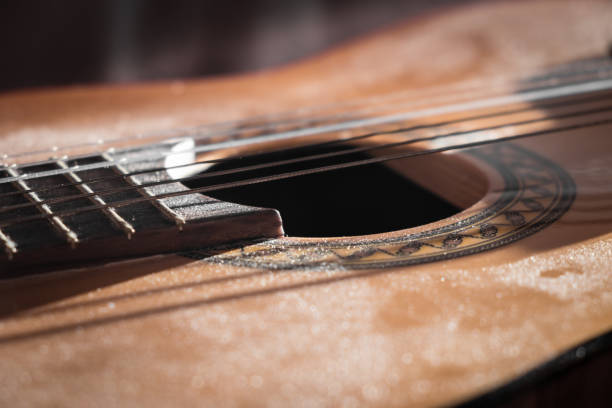Covid-19 is 2020’s uninvited guest, and looks like it may be
extending its stay for a little longer….ugh! Don’t you just hate rude guests?
Get the hint, and GET OUT.
Until that fateful day, when this madness ends, we turn to
things that bring us joy, one such thing usually being music. Music and Covid-19.
An odd, unexpected pair, but a pair that can help cancel the bad with some
good.
During our time at home, we have turned to art to keep us
sane. Whether it is playing Bach while meeting that deadline for work, or Mooseblood
while you’re folding laundry (looking at you, Andrew), music helps bring a
sense of normalcy to our lives, and also provides us with some ACTUAL health benefits
as well. (As I write this, I am listening to “The Harry James Songbook” – Ray Anthony,
give it a listen, it’s oh so sweet!)
Hold up, don’t roll your eyes at the screen! It’s true. That
isn’t some mumbo jumbo I’m making up. Music truthfully provides benefits to your
mental health, cardiovascular functions, and even athletic performance. Although
it doesn’t CURE anything per se, it is extremely beneficial. Therefore, I still
recommend taking your vitamins, kids. Or don’t. I’m not your mom, or a doctor,
so what do I know?
Getting back on track, music is everywhere and always has
been. Whether you are musically inclined or not, you participate and often make
music yourself. You sing along to a song, you hum, you snap, you clap your
hands – sounds themselves count as music and help enhance your health and
overall performance and we will find out why!
One of my favorite quotes describing music and the brain
comes from a Harvard Health publishing. It states, “The human brain
and nervous system are hard-wired to distinguish music from noise and to
respond to rhythm and repetition, tones and tunes,” so whether you think
you’re musically inclined or not, you are technically designed to be, at some
degree, musical. So, we are all born with music in us, and I think that is
absolutely fascinating.
Our brains are designed to perform specific musical functions
that allow us to perceive different elements of music, such as pitch, rhythm,
and lyrics. I could get in to some heavy science-y talk here, but I’d rather
keep it simple. If interested in reading more on the specific parts of the
brain and their relation to music, the link for the article is below!
Don’t get mad at me if you do not go from zero to hero in
your math studies. It’s a speculation and one that affects certain people. If
you can relate to this, you can understand how listening to music and math go
hand in hand. I, for one, always sang a song to myself while doing my math
homework back in school. It is something that helped me focus, and maybe made
me better at math? I did well in the subject, so maybe there is some truth to
this. Step aside, Einstein!
Music and emotion. A match made in heaven. Music allows
musicians to express feelings and the listener to feel them. Music can also
bring about different emotions in the listener, outside of the intended one. I’m
sure it is second nature to pop on your favorite song when you feel good, or even
listen to some music when you’re stressed to help alleviate some of the
anxiousness or uneasiness you are feeling. I am 100% guilty of this and always recommend
popping on some tunes when your emotions get the best of you. A study was done
with a group of people getting surgery. Select people listened to music before,
during, and after their operations; the other group went through surgery as
normal, but without music. It was reported that those who listened to music
were calmer, resulting in a lower blood pressure result and a less strenuous experience.
It is important to consider that the tempo is important for your mood:
slow, classical music can help you relax, while faster, upbeat rock tempos can
cause your body to become aroused and excited (Keep it PG, people). Music is such a convenient and accessible tool
to help us accomplish so many things! It is amazing.
As mentioned, music can lift one’s mood or enhance it. It
just depends on preference and tempo. Music with faster tempos has
been proven to lift the moods of people experiencing depressive illnesses. It
was found that music can also help reduce chronic pain and improve the quality
of sleep. It might not replace good ol’ Prozac, but it can definitely improve symptoms
and overall quality of life. (Ask me, I know!) In addition, music in general can open the door to encourage those with more severe mental disabilities to analyze lyrics, engage in music improvisations and songwriting, and even stabilize mood and behavior, all by simply listening to a song.
It is no question that music can aide in the overall health
and recovery of people struggling with mental or some physical ailments. There
are plenty of medical journals and studies on the topic to look into, I
mentioned a few, but that does not even make a dent in the discoveries.
It is important to keep the music alive, especially during
these trying times. The Michigan Phil is dedicated to bringing music to you, our
dedicated friends, to help lift spirits and bring some happiness. With the rise in depression and anxiety during the pandemic, it seems we need our spirits lifted more than ever. We will get through
this and are determined to keep the music going, whether in person or through
live-stream videos, for you! After all, we are all in this together.
Sources:




